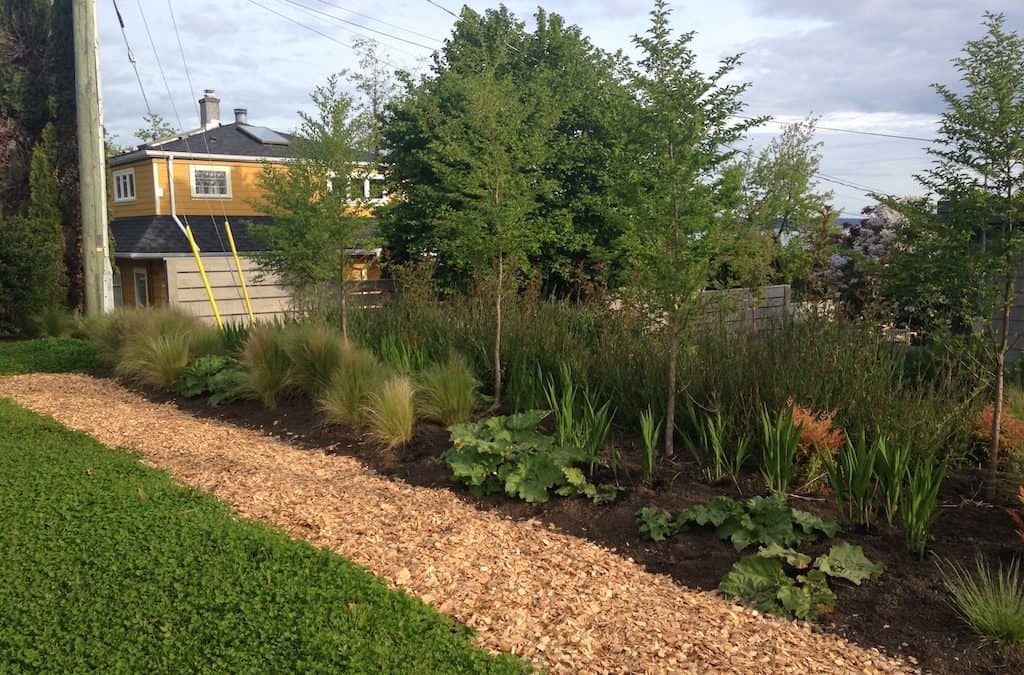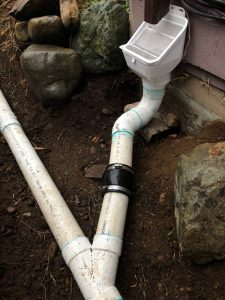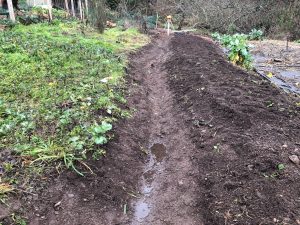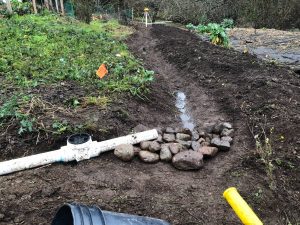Like many property owners who live on acreage, we rely on a rock pit or drainage pit to handle or infiltrate the water coming from our residence roof area and perimeter drains. Last fall, we discovered that our rock pit had failed, which is very common for a home 40+ years old, over time debris, works it’s way into the drainage system eventually can plug up the inlet to the rock pit. There is an old saying, “The problem is the solution”. With that in mind, we set out to improve how we handle or deal with rainwater from our roof surface.
Our first step was to install new piping around the perimeter of our house. Also, we installed a primary filter at each downspout location. The primary filter or rain head is a great way to transition between a downspout and a solid PVC drain line. It keeps rodents and debris out of your drain lines to ensure sounds operation of the system. You don’t want an obstruction in your drain line during a storm event.
Now that we have the rainwater collected, we now have to plan on where we will send it, and in our case, the solution was quite evident. We already collect rainwater from a small section of our roof area (20%) and send this to a series of cisterns (12,000 gallons) for irrigation use during the growing season. Rainwater from the remainder of the roof area can now be planted within our landscape using a technique called passive rainwater collection.
Although less glamorous, no big cisterns or pumps, passive rainwater harvesting is a potent and underused approach to dealing with excess roof or stormwater (water which has hit the ground and is now flowing) on most properties. We tend to think of rainwater as a liability, especially during the winter months. The reality is this water can be stored within the soils of your landscape for future use.
Back to our problem and subsequent solution, we needed to find an appropriate location to infiltrate this water so that it benefited our landscape while relieving pressure on the drainage around our house. Problem solved, we have our winter annual vegetable garden downhill from our home and below 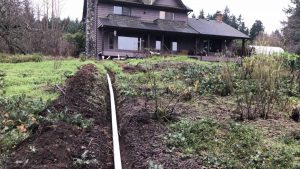
Several essential steps to consider when creating this type of structure:
1. You’ll want to size the swale or rain garden to be large enough to take a big rain event without overflowing. In our example, we took our roof area (200sq meters) and multiplied this by a one-inch rain event (25mm) to come up with the volume of water we would need to store in our swale. It turns out this is around 5000 litres.
2. The other item to ensure you consider is an overflow, what happens when your incoming water exceeds the capacity of your swale, you allow for this in an overflow. This could be a small catch basin set at a predetermined height or in our case, it’s a level spillway, which is just a level portion of the swale set at a fixed elevation. We can have 12″ of water in our swale, but after that point, the water will flow out the spillway and away from the area. In the future, we will connect this spillway with another rainwater harvesting structure.
3. When planning a rain garden or swale, you would want to ensure you are at least 10′ from your building footprint and in a downslope orientation, so you are not loading up your perimeter drains.
It turns out that, in fact, our problem created an excellent solution. We now have addressed our stormwater issues around our house by using and storing the excess rainwater within our landscape. The plants we intend to place on our new swale mound will enjoy the extra water they receive and diminish or eliminate the need to irrigation them once they are established.
In our next blog post we will be looking at another passive rainwater harvesting project on our property, this one will address stormwater from our road and parking area and how this can benefit your landscape.

Co-owner of Jaan Designs
Regenerative land designer, installer and educator

